Valor - The Heroic Roleplay System by Doresh
Introduction
Original SA post Valor - The Heroic Roleplay System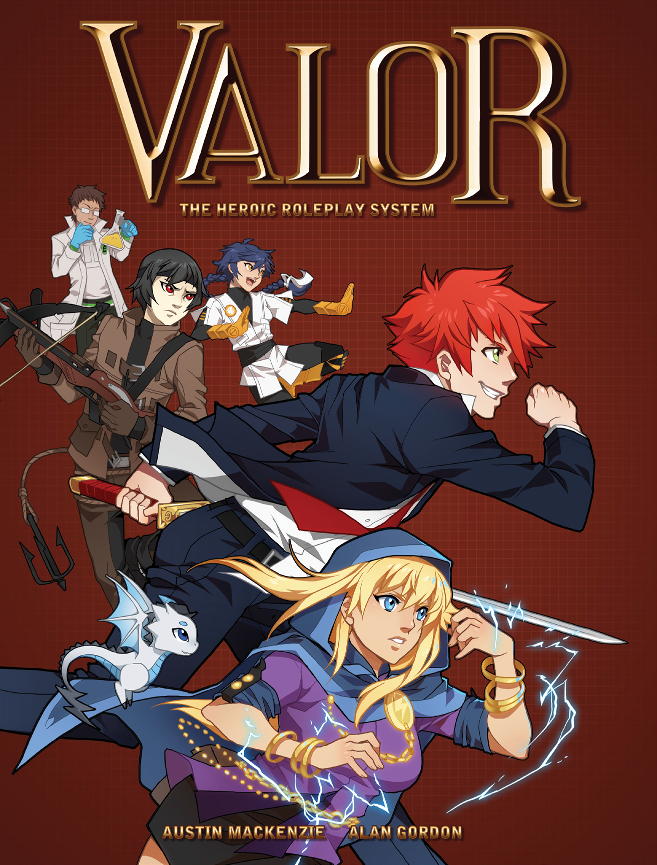
The smaller font reminds me of Street Fighter 2
Introduction
Valor - aka "Final Fighter Z 4E", aka "
The game appears to take a few cues from 4th edition D&D and adds in some stuff that one of those JRPG-inspired roleplaying games would do (especially Super Console, which I can only approve of), and the rules are written in such a way that you can use either square or hex grids for combat without having to change anything. Action resolution is done with 1d10 + modifiers vs a target number or opposed roll.
Characters are level-based (ranging from 1 to 20), but build in a point-buy fashion where each aspect of your character uses different points, making min-maxing harder to pull off. The opposite is also true, for the writer assures that making a character that sucks balls is almost impossible to do as long as you don't spread out your Attributes aka stats too evenly, because you only really need to focus 2 or 3 of those depending on your "build".
The book doesn't beat around the bush: There's no "What's a roleplaying game?" section or a multi-page introduction. It goes almost immediately into character creation and rules.
Attributes
The game uses five Attribute pairs, consisting of a Base Attribute and an Active Attribute each. The former is your raw stat, used for derived statistics and to determine the power of your attacks, powers etc., while the latter is used as a modifier for rolls. Active Attributes are always the average of the character's level and the Base Attribute (rounded up), though this value can be modified a bit later.
This averaging process reminds me of Super Console and means that your character will automatically get slightly better at everything as he levels up. A starting Base Attributes can range from 1 to 8, so the maximum difference in contested rolls at level 1 is like a 4. This gap will of course increase as the characters level up and increase their most important Attributes - but fear not: While contested rolls have both sides use the same Active Attribute by default, the defender can always opt to substitute the default with any other Active Attribtue (ideally his highest one), at the cost of having a slight negative quirk attached to his roll.
But enough about that, let's look at the actual Attributes (which the book is kind enough to cover in quite a bit of detail, covering each Attribute's merits and flaws and how it can be best combined with other Attributes).
Strength and its Active Attribute Muscle are for raw strength. It is one of the two Attributes used to cause physical damage, and it is also used in calculating your Health and Defense (aka physical armor). It makes you pretty buff and strong in melee combat, but Strength itself does nothing to get you into melee range, and though you can make ranged attacks based on Strength, their range is a bit gimped compared to other Attributes.
Substituting another Active Attribute for Muscle when defending is called Muscle Guard, as the character just decides to deflect the incoming attack with his massive pecs or something. The downside is that the attack will always deal a bit of minimum damage. If the attack doesn't actually do any damage, your roll does instead get a slight penalty (which is true for all substitutions against stuff that doesn't do damage).
Agility and its Active Attribute Dexterity are the other side of the physical damage coin, primarily meant for ranged attacks and quick and light melee strikes. The former is pretty ideal as Agility-based ranged attacks get a bit of extra range, whereas the latter is a bit more tricky because Agility itself does nothing to boost your Health or Defense. Luckily, Agility also determines your Move, so you can make a pretty crazy skirmisher. And you will probably want to put points in another Attribute that comes later for some survivability. Dexterity is also used for Initiative rolls, which is always nice.
Substituting for Dexterity is called an Acrobatic Dodge, which naturally involves getting out of the way of the attack. Failing to do so will cause extra damage as you take the full attack to the face.
Spirit and Aura are your blaster Attributes. Spirit-based attacks deal energy damage, and they're usually far from subtle, as you can gain a nice discount when adding any kind of area effect to the attack. Spirit is also used to calculate your Stamina (basically MP) and Resistance (aka energy armor).
Substituting for Aura is called an Aura Deflect, allowing you to defend against an attack by creating some sort of force field or just hardening your body with Ki. Each deflect costs Stamina to use, so you might get overwhelmed if you're not careful.
Mind and its Active Attribute Intuition is the other energy damage dealer. It does just as much for your Stamina and Resistance as Spirit, but it is much more precise in nature. You don't get a discount on huge AoE attacks, but you do get one to have them be bendy, indirect or selective, making it much easier to avoid friendly fire.
Substituting for Intuition is called Attack Prediction, which does just what it sounds like. As the process takes a bit more time than a more instinctive dodge, you suffer a temporary reduction to your Initiative, which again can have you get overwhelmed via Zerg rushing.
Guts and Resolve are the odd man out, as they are mostly defensive in nature. Sure, there are ways to roll Resolve offensively, and you can use Guts for healing spells and techniques, but there is no way to actually cause damage with it. Still, Guts has the biggest impact on Health and is also used for Defense, making it a very popular choice to make your character less squishy.
Substituting for Resolve is a Resolute Defense, aka ignoring an attack through sheer badassery. Its only drawback is that you can't use it if your Valor (more or less your Limit Break points) is too low, so you can't just shrug stuff off unless the situation has become serious enough.
Derived statistics have mostly been covered above, and they are for the most part self-explanatory. Health and Stamina also increases automatically as you level up, as does your base damage you deal with each Base Attribute (sans Guts, of course), and your Defense and Resistance. Again, levelling up makes you better at everything.
An interesting kind of tertiary statistics are the Increments, which exist for Health, Stamina and your base damage and are equal to 20% of the respective values Health and Stamina Increments are used for your natural healing rate (which happens on a scene-by-scene basis) and to quickly eyeball stuff like falling damage. Doubling your Health Increment also determines your Critical Health value, which works like the Bloodied state in D&D4e.
Damage Increments are used for special occasions to figure out things like minimum damage or extra damage gained from doing feints and air juggles (yes, that's a thing).
Valor is your fighting spirit. Each scene starts everyone at 0, and it escalates from there. Powerful attacks might cost your Valor, and you gain a passive bonus to all rolls if your Valor is maxed. On the downside, Valor can actuall go into negatives, which adds a penalty to every roll. Getting really low can actually knock you out of the fight.
Skills are one of the main customization options in Valor. They are essentially Feats, Class Abilities and Flaws, granting permanent or situational bonuses and new types of actions to use. The higher your level, the more points you can spend on Skills.
Techniques are all of your attacks, special moves, spells etc, bought with their own pool of points. These work like in most effects-based games: You pick a basic effect and slap on some stuff to add utility and/or drawbacks until you get roughly what you wanted.
Interestingly, there is no such thing as a basic attack in Valor. If you don't have at least one damage-dealing Technique, you can't hurt anyone. All Techniques also cost Stamina to use, unless you've slapped on enough drawbacks aka Limits to reduce the Stamina cost to zero.
Next Time: The Rules - which takes up surprisingly little space for a tactical combat game.
The Rules
Original SA post Valor - The Heroic Roleplay System
The Rules
And now for an overview of the general mechanics.
Combat
The combat rules are relatively easy and straightforward, only covering around 6 pages, though that's just the basics. You can pull off al sorts of stuff with Skills and Techniques, but that's for later.
As mentioned previously, Valor works with both square and hex grids. The little downside of this is that there's no cone-shaped area effect, so you have to settle on a wide line effect. How long a round of combat lasts or how big a grid actually is is up to the GM, if he even bothers with these details at all.
Initiative and surprise aka ambush rounds are pretty standard D&D affair, and the action economy is kinda similar: Everyone has an Attack, Move and Support Action, the latter of which is used for buffs, debuffs and Skills. You can exchange your Attack Action for either of the other two, and the Support Action can be turned into a weaker Move Action that only covers half the distance. So even if you are the party's main healer, you've always the option to smash skulls in.
Powerful or slow attacks might require a Slow Action, which eats up all your other Actions.
Special Actions exist in the form of Reactions (aka any action you do when it's no actually your turn), Defend (sacrifice your Actions for a bonus to your defense rolls) and Charging (a Slow Action that lets you recover either Valor or Stamina, and may or may not have you stand around yelling DBZ-style).
High-level characters can eventually get a second Support Action, but additional Attack Actions are strictly for boss characters only. If you want to hit multiple characters in one turn, you have to get a Technique that lets you do just that.
A neat little thing is the Zone of Control or ZoC, the grids around your character (though there are ways to beef that up). This is not only a fancy term for your default melee attack range, but it also acts as difficult terrain for enemies, reducing their movement range if they want to get past you. There are ways around the ZoC effect (like how you would avoid Attacks of Opportunity in D&D) and gain some additonal options to use against people inside of your ZoC, but its nice to have a permanent effect going on that makes it harder for enemies to bum rush the squishy wizard in the back row.
Like mentioned last time, attacks are opposed rolls using the Technique's Attribute, unless the defender substitutes for a different one (which is basically the default assumption in this game).
Character death happens when you reach -100% of your maximum Health, though that probably doesn't come up all that often in casual combat. Starting characters are rather beefy, with 100-200 points of Health and attacks that deal around 20-30ish points of damage after Defense or Resistance.
Oh, and talking is always a free action.
Status Conditions
The negative status effects of the game. A rather short list, but you can get more through debuffs. Most of these. Conditions with no definite end can usually be removed by spending either a Support or Move Action.
The two that stand out the most are Flying (the only Status Condition that's actually a good thing to have, as it makes you immune against melee attacks and lets you ignore ZoC) and Launched, which has you being air juggled for extra damage and really rewards parties who know how to delay their turn, since Launched ends automatically when the launched gets to act again.
Criticals
This isn't one of those games where criticals hits are scored on a natural X. Instead, they happen if you beat the opponent's roll by at least 10, which is not very likely to happen if the two are evenly matched and at full strength.
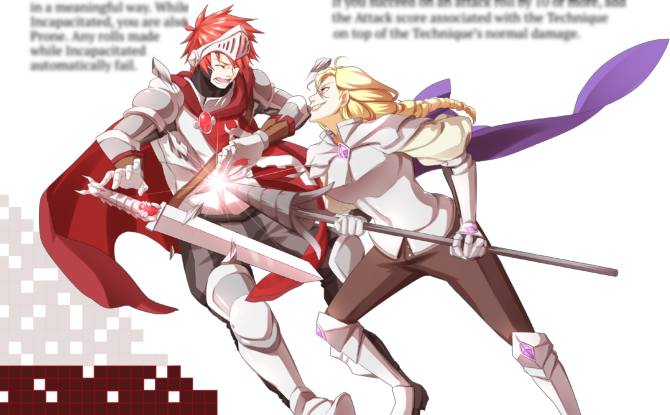
[Insert Gurren Lagann refrence here.]
Interestingly, the game also has Critical Defenses, which adds a temporary penalty to the opponents rolls. You gotta be careful to attack someone that is clearly more powerful than you.
Overdrives
These are essentially general Limit Breaks available to everyone. They all cost 3 points of Valor to use and are therefore available roughly every 3 rounds, unless you want to save up some points for later.
- Burst of Speed: An extra Move Action
- Desparate Action: Screw Initiative, now's my turn.
- Determination: The obligatory juicy bonus to a roll.
- Exceed Limitations: Instantly charge up your Stamina to 100%.
- Indomitable: You have a bunch of debuffs? No you don't.
- Sudden Action: Interrupt anyone to use your Support Action.
- Teamwork: Weaker then Determination, but you pass on the bonus to one of your buddies.
- Unbreakable: Gain some temporary Health that may get you killed after combat. This basically let's you pull off a Boromir.
Environments
Having an interesting environment for the battlefield is always a plus, and there are a number of Skills to take advantage of it.
For general stuff, being behind cover gives you either a defense bonus or makes it impossible to target you directly. Other obstacles include darkness, difficult terrain, damaging terrain and water.
Structures and Objects
Who doesn't want to blow up stuff and punch people through walls? Valor lets you do just that.
The game doesn't go the obtuse route and give every piece of destructible environment actual Health values on par with characters. Instead, they have Durability that is generally between 2 or 5 and never really leaves the single digits. Characters can deal 2 points of Durability damage at the most (or more if the Technique is specifically designed to wreck stuff), and you can also add a few tiny points of Defense or Resistance to the structure to make it immune against casual punches.
Challenge Scenes
The main sort of structured play outside (or sometimes during) combat. They're pretty much Skill Challenges, with a few similarities to Double Cross, and that Lord of the Rings board game by Reiner Knizia: Each Challenge Scene consists of one or more Meters. They can start anywhere between 1 or 10, and succeeding at a check linked to it can make it go up or down by 1 or more steps depending on what's beneficial and by how much the check succeeded or failed.
Some Meters can bring the scene to an end when they reach a certain threshold, while others just make those scene-ending Meters easier or harder to pull off.
As an example, an investigation scene might have a main Meter that tracks the overall progress, starting at 1 and rising to 10. Other Meters might track the group's favor with different organizations, making it harder or easier to get information from them. While that is going on, another Meter might track how much suspicion the group raises.
Each turn, a character can try to influence one of the Meters, using various kinds of Challenge Actions. These include stuff like Engineering, Knowledge or Negotiation, and each can be pulled off with one of two Active Attributes (or others, if if makes sense in context).
The check itself is either done against a fixed difficulty, or as an opposed check if there are other groups involved in the Challenge Scene. The former can also quickly become the latter, for you can try to hinder an opponent at his Challenge Action.
The Season
Seasons are the tiers of the game, with each covering 5 character levels, leading to your typical campaign that goes all the way to level 20 having four seasons.
Each season makes it easier for characters to destroy stuctures (with endgame characters being able to punch through thin steel walls and limit break through thicker ones), and they "unlock" access to new Skills and Modifiers for Techniques, including stuff like permanent flight or Anime-style flash steps.
In a way, these Seasons model how Dragon Ball started as a silly martial arts romp that introduced more and more crazy powers and concepts until everyone was staying in the air 24/7 and stacking on transformations.
The GM is free to allow earlier access to Season-restricted stuff, if say he wants everyone to be able to fly from the get-go. This doesn't really throw anything out of whack as long as everyone has equal access to it.
Next Time: Skills & Flaws - those are some fancy tricks.
Skills and Flaws
Original SA post Valor - The Heroic Roleplay System
Skills and Flaws
Skills and Flaws are pretty darn flexible and make up a huge part of your character. Flaws are pretty self-explanatory, but Skills cover a lot of ground, covering - in D&D terms - things like Feats, Class and Special Abilities, as well as general advantages.
As typical for a merits & flaws system, many Skills and Flaws to pick come in levels for a greater effect (which in Valor's case in pretty much always a linear boost in power). Depending on whether the Skill or Flaw in question has a slow or fast progression, the maximum level you can take is either equal to your current Season/Tier or roughly twice as high.
As there are a quite a few Skills and Flaws that passively affect a character's combat statistics or grant other combat-related benefits or drawbacks, the main way Valor does buffs and debuffs is by temporarily slapping Skills and Flaws on someone, which stacks with existing Skills/Flaws and lets you effectively double your maximum level (as the (de-)buff is of course also limited by the level progression).
This means that, for example, anything that can affect your Defense in combat is bound to involve either the Iron Defense Skill or the Feeble Flaw. There aren't a whole lot of special cases, and those are just other Skills.
Flaws
Flaws are your primary way of gaining additional Skill Points and create a more interesting character. The GM is actively encouraged to not allow Flaws that don't actually have any impact (like say Weak Energy Attacker on a pure physical fighter), and the amount of SP you can get back from Flaws is heavily limited by the character's current level. You can front-load yourself at level 1, but you'd have to wait a few levels to gain all additional Skill Points.
Many Flaws don't need much elaboration, as they mainly modify Derived Statistics, add a penalty to avoiding attacks from certain Active Attributes or reduce your starting Valor. Others nudge you into behaving a certain way ( Violent has you lose Valor every turn you didn't spend attacking someone), if not enforcing it directly ( Berserker has you go, well, berserk when you reach critical health, buffing your combat statistics in the process, but also eventually forcing you to attack allies if nobody else is around).
Another fun one is Unthreatening, which removes the difficult terrain effect of your Zone of Control. This is perfect for literal healbots that do nothing to enemies passing by, or wimps who are, well, unthreatening.
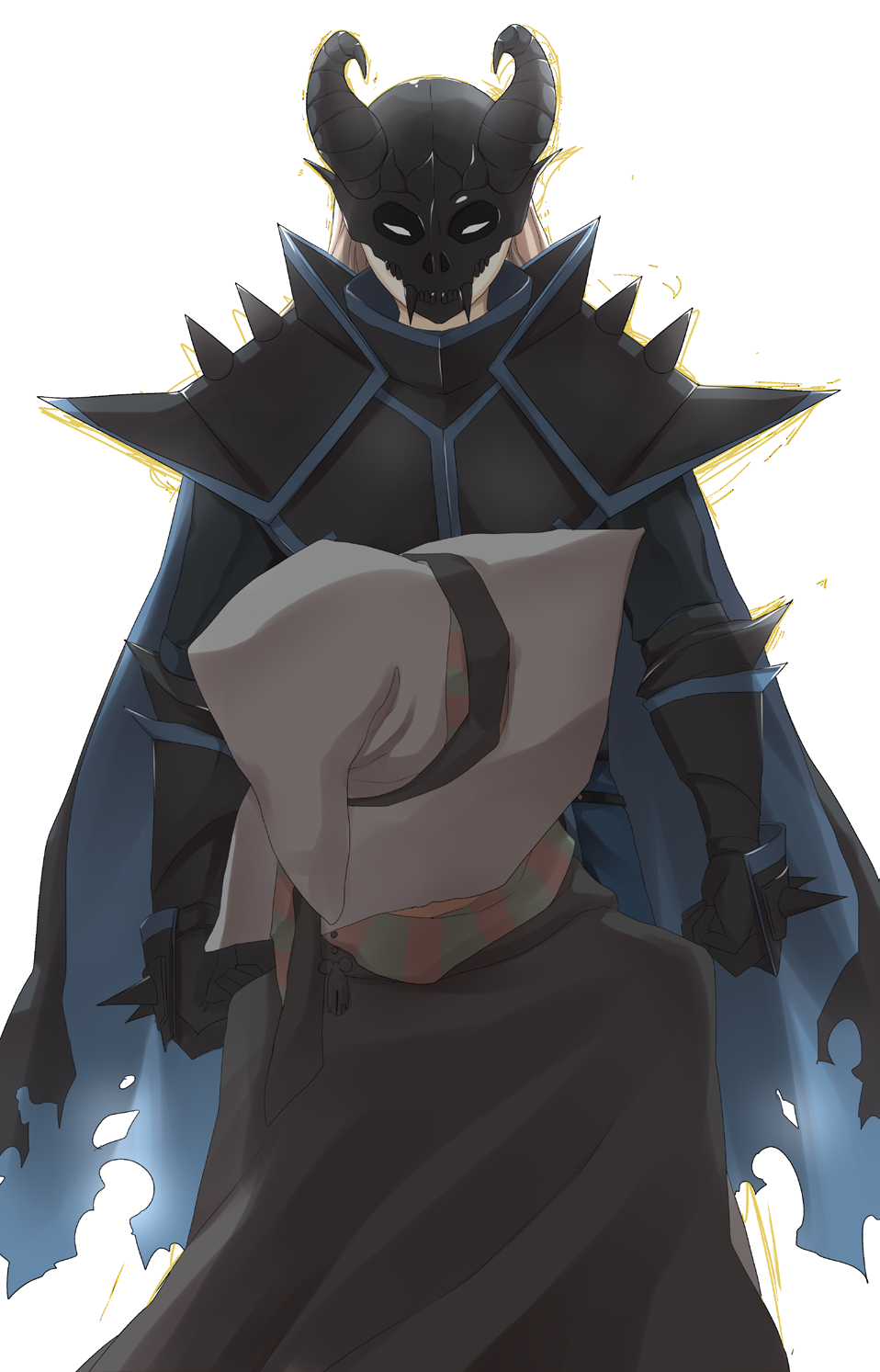
Just let him pass, dude.
Interestingly, Valor eschwes purely roleplaying Flaws, or the typical rival/enemy flaw - for the most part. The closest you have to both is Malevolent Entity, which is basically Ichigo's Inner Hollow and Guts' Berserk Armor, aka an evil entity inside your head that wants to take over your body.
The main advantage of this Flaw is that it allows you to take the Dark Power Limit to make your Techniques cheaper, at the cost of triggering the entity to try a takeover. This also always happens if your health goes critical or the plot calls for it.
Once possessed, the character gets a bonus to all rolls and becomes an NPC until the character can regain control.
To keep lucky or unlucky die rolls from messing things up, each failed attempt of the entity to take over will give it a cumulative bonus for next time until it actually succeeds. Conversely, the character himself will have ean easier time regaining control every time he fails to do so.
Weaken Flaws
These can't be taken as normal Flaws and are restricted for debuff use only. They consist of Flightless, Impaired Accuracy and Impaired Evasion and pretty much speak for themselves. Flightless of course does little if the target can't fly in the first place.
Permanent Skills
These are for the most part the opposite of Flaws and active at all times, boosting your derived statistics or making you start each scene with some Valor. Sneaky guys will love {b]Discreet Aura[/b] (basically the DBZ trick of turning off your Aura so guys who can sense Aura - with the Skill Spirit Sight - have a harder time finding you), and Balanced Fighter is great for everyone who feels a bit MAD or wants more out-of-combat utility, as the Skill adds a point every Active Attribute that is lower than your highest one.
Permanent Skills is also where we find how Valor handles sizes. There isn't actually anything about tiny characters (though a physically weak character with the above Unthreatening Skill should cover this nicely), but bigger characters take the Increased Size Skill. Each level has you take up your adjacent spaces (aka your former Zone of Control) and adds a bonus to attack rolls because you're pretty hard to avoid. The downside is that you take a penalty to defense, but at least other characters have to roll higher to score a critical hit against you, giving you a net gain in critical resistance.
Going overboard with Increased Size levels can make it pretty hard to squeeze into tight space, so everything beyond the first level is probably best left as a buff for a PC.
Endgame Permanent Skills let you regenerate Health or Stamina each turn, gain an additional Support Action, increase your Zone of Control or automatically hurt everyone inside said Zone of Control. Oh, and you can also teleport like a boss. Valor usage can also become pretty crazy once you're able to store more Valor and regenerate it more quickly.
Situational Skills
These are all Skills that aren't active all the time and require specific conditions to be fulfilled, making them quite varied. Examples include Crisis and Desperation that beef you up when you reach Critical Health.
Some of these add additional options for combat: Nimble Movement lets you ignore an enemy's Zone of Control if you succeed at an opposed Dexterity roll, Dig Deep lets you pay for Techniques in Health instead of Stamina, and Empower Attack and Resolute Strike let you modify your attacks (damage at the cost of other Actions and an attack roll bonus for a defense roll penalty, respectively).
And if you liked D&D's flanking rules, you can take Team Tactics that does pretty much the same thing.
Another pretty interesting one is Overload Limits, which lets you temporarily ignore whatever Limits you've put on a Technique if you pay the full Stamina cost (without the reduction you gained from the Limits).
Later Situational Skills add utility to other Skills (which I'll cover later) or new options to your normal movement (phasing, wall and water walk...). There's also Unstoppable, which lets you keep going for a while if you reach negative Health through sheer badassery.
Active Skills
These all add actual new actions to use in combat, each taking a Support Action to pull off. Some are your typical feints and intimidation attempts, but others stand out quite a bit.
Attack Node is a pretty funky skill: It lets you spend Stamina to create stationary nodes through which you can attack with any Technique, as if you were standing in several places at once. The higher your level in this skill, the more nodes you can have active at the same time (a previously hinted at Situational Skill helps you here, as it allows you to create more than one node at a time), and the endgame Skill Attack Node Network lets you launch Techniques through all available nodes for an attack bonus. And your enemy try to stay out of range, you can move the nodes around with another Active Skill called Effect Transfer.
What do you do if your opponent spams Attack Nodes all over the place? Well, the Skill Nullify lets you get rid of them, while the later Effect Capture lets you try to use them for yourself.
Characters with a Malevolent Entity get access to an exclusive Skill: Dark Healing. No Stamina cost involved here, just spend your Support Action and you recover a Health Increment. Unfortunately, this Skill also triggers your Entity, so don't overdo it.
For all your Naruto needs, you can pick Clone. It lets you create illusionary clones of yourself that can't actually attack and are gone in one hit. Nevertheless, they are neat to confuse the enemy, slow him down a lot (clones have a Zone of Control as long as the opponent doesn't know who the real one is), and the Situational Skill Clone Tactics gives you an extra flanking bonus with your clone buddies.
Duel lets you challenge a foe to single combat. He isn't forced to, but both characters will gain Valor from doing so. Breaking the duel through interference is possible, but comes with a big Valor penalty because you just ruined the mood.
Fly is your primary way of attaining the Flying status (aside from wall walking, though that's obviously a bit restricted). Not only are you unaffected by things on the ground, but you also get a bonus to your Movement rate that goes up the more points you pour into this Skill.
Your flight time is limited, since you have to spend Stamina each turn to stay up - that is until the endgame Situational Skill Free Flight becomes available and you can go full-on DBZ.
Nothing sucks more than being the melee fighter dude in a battle with flying critters. Fortunately, Valor comes with the Skill Jump, which lets you attack flying creaures normally for a little bit of Stamina. See a high-flying dragon in the sky? Now you can punch him.
Heatlh and Stamina Transference lets you assist allies by trading some of your Health/Stamina for theirs. This works in Increments, so a squishy wizard transfering Health to the party's tank is a lot more effective than the other way around.
Portal is a variation of the Attack Node, and many other Skill that influence a node also affect a portal. This skill lets you create a network of portal that are all linked with each other, treating the spaces they're on as if they were right next to each other. Everyone benefits from this, but opponents should beware, because the owner of the portal can decide from which portal they will emerge.
Another Attack Node variant is Refraction Point, which you can target to have your Techniques bounce off of them. This does allow you to increase the effective range of your Techniques and hit around corners, though Attack Nodes already do that. What Attack Nodes can't let you do is to use area effect Techniques to create makeshift chain lightning, or just carpet bomb the whole place (though to preserve everyone's sanity, no target can be attacked more than once with this).
The Situational Skill Refraction Chain makes Refraction Points even handy for single-target Techniques, as bouncing your attacks off makes them deal more damage.
Swift Step is your typical Shounen anime / Zone of the Enders gimmick of "move so fast you appear to be teleporting". It let's you move pretty much anywhere as long as you can pay the Stamina to cover the distance, limited by the Skill's level. For extra fun, the Situational Skill Transposition let you zap over to a spece occupied by another character to switch positions with him unless they resist.
Like Fly, you can ditch the Stamina cost with the endgame skill Free Swift Step. You are still limited by the Skill's limit on how far you can go per use.
Finally, have you ever complained about how hard it is to get the squishy wizard to safety once the enemies reach him? Or about the dwarf fighter who is to slow? Well, with Toss, you can throw any nearby ally a good distance (equal to a moderately fast character, further boostable with levels) in any direction you want.
Reaction Skills
These have some fun options. Sure, there's your typical Cover that lets you play bodyguard, but then there's stuff like Afterimage, which lets create a Clone while you do a Swift Step, who ends up either at your old position or at the one you were supposedly stepping to (kinda like Chizuru Kagura from King of Fighters).
Area Shield adds utility to your Aura defenses, letting you defend for your allies if you pay additional Stamina and the attack in question is an Area Effect. Another goodie for Aura users comes with Line Deflect, which lets you redirect Line Attacks you just successfully defended against (though you can't have go back exactly the way it came from). You can combine both of these effects with Deflecting Shield, which lets you redirect line attacks from any ally you defended for.
In a similar way, Damage Feedback boosts your Muscle defense by having failed melee attacks against you hurt the attacker (your pecs are just that hard)
If Dexterity defenses are more of your thing, there's Diving Escape, which grants you a free movement action if you successfully evaded an area attack (though you can only move in a direction that would've gotten you away from the blast). A bit weaker is Mobile Dodge, though that one works with any attack.
For Intuition-heavy character, you can get Opportunistic Dodge, which throws the attacker off balance for an attack bonus.
Mean while, Resolve characters can use Push Away to basically have enemies bounce off of you.
Counterattack works kinda interesting in Valor, as it lets you "store" Techniques to be used to interrupt enemies that try to attack you, potentially making them waste their attack. Pretty neat in situations were you have no use for an Attack Action. Just ave it up for later.
Counterattacking becomes more useful with Clash a little later on. Now you use your Counterattack as a defense, and whoever wins not only lands his hit, but completely negates the other's attack.
For a more D&D feel, you can take Interrupt Attack for Attacks of Opportunity. This only works in conjunction with Counterattack as you have to draw from your stored Techniques. On the plus side, any hit will make the enemy's Move drop by quite a bit.
With Ranged Interrupt, you can essentially turn these Attacks of Opportunity into reaction fire, letting you interrupt anyone who comes withing your prepared Technique's range. Since the Move reduction of your Interrupt increases with the Skills level, you can stop several enemies dead in their tracks if you've saved up enough attacks.
Overdrive Skills
These give you new ways to spend your Valor. They work a bit similar to most Permanent Skills in that they boost your combat statistics (namely Active Attributes, your base damage and your Defense/Resistance), giving you a nifty buff that lasts for the rest of the scene. The longer the fight lasts, the more dangerous you become.
Challenge Skills
These are - no surprise here - for Challenge Scenes, and they include the only Skill that actually works like a skill in most games: Proficiency, which makes you a bit better at one type of Challenge Action.
The most high-end Challenge Skill is Favorable Success, which lets you affect a second meter related to the one you successfully affected.
Another interesting one is Asset, which can be anything from wealth or conncections and grants a further bonus if the asset would be of use in the situation. Challenge Technique works similar, but applies to a specific type of situation.
The remaining Skills also work on specific situations (and can therefore be taken multiple times), letting you try to determine which action would work the best in the current situation, or spend Valor to avoid a failed roll from messing things up.
Companion Skills
If you want to be a druid, Pokemon trainer or Stand/Persona user, you gotta take the Companion Skill. Not only does it give you access to up to 4 Companions, but also to various Companion-related Skills to boost them.
To avoid the madness typical involved with having a character rule supreme over the action economy with his private army, Companions in this game are basically Attack Nodes that can move around. Like Attack Nodes, you can use any of your Techniques through your Companions, and there are specific Limits you can slap onto your Techniques so that they can either only be used by your Companions or only by a specific Companion.
Unlike Attack Nodes, Companions can actually be attacked by normal means. Instead of giving everyone his own stats and Health, they instead defend like you would, and any hit against them disables them until you revive them with a Support Action.
The Companion Skills, among other things, let you use your Companion as flanking buddies, grant them Zone of Control to slow down enemies, and essentially act as ablative shielding for you and later your allies by playing bodyguard.
You can also boost their default Movement rate and grant individual Companions permanent flight, which can be quite handy with the Skills Mount and Ally Mount, which lets you temporarily remove a Companion from play to take on his movement rate and flight ability.
Boost Skills
Similar to Weaken Skills, these can only be attained through buffs. They act as a general boost for your range, reach, attack and defense. A pretty fun one is Powerful Blow, which makes your attacks push people away.
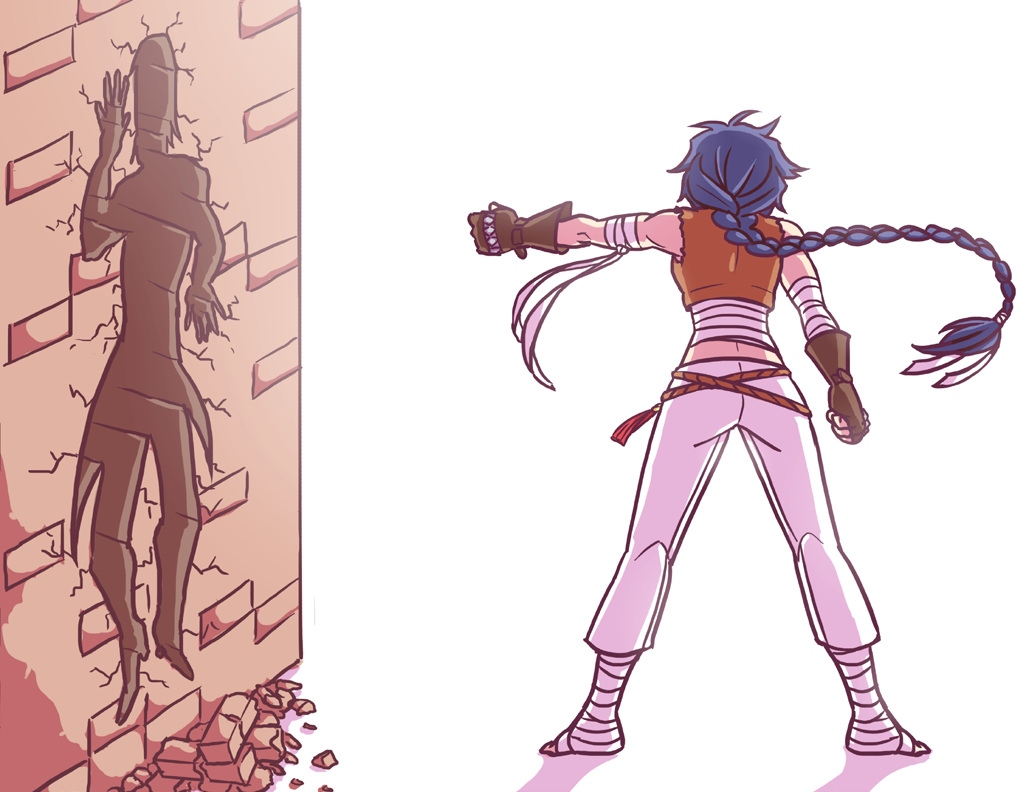
Somewhat like this.
The most interesting one is Change Attributes, which lets you switch to an entirely new set of Base Attributes. Naturally, this is less something an ally slaps onto you and more a buff you aplly to yourself as part of a transformation (which are covered in the Techniques section).
Creating Skills
The game has a few guidelines on how to create Skills and determine their costs, using Telepathy and Mind Reading as exmaples.
Overall, I quite like the ideas here. Attack Nodes and especially Refraction Points are pretty cool, and I like the idea of storing attacks for later use (which is a bit like the combat system in Xenosaga, except reactive). A Pokemon-style campaign will probably need a bit more crunch added to the Companions, but that's not too surprising as they aren't supposed to take center stage by default.
Next Time: Techniques - can you go Super Saiyan? Or do you prefer a Devil Trigger?
Techniques
Original SA post Valor - The Heroic Roleplay System
Techniques
Valor's Skills already let you do quite a bit, but it's the Techniques that actually let you get things done - especially since there's no default attack to be found. You gotta build it yourself.
Techniques are build in an effects-based way. Since they are primarily used in tactical combat, the actual list of main effects - called Cores - is just slightly more than a handful to keep track of.
Each Technique has a Level describing its overall power. The Level has a hard cap based on the character's own level, but other than that, you are free to split the Technique's Level into Core Power (the raw strength of the Core itself) and Modifiers (your typicall effects-based modifications to add range, area and other kinds of utility).
The Technique's Level also determines its overall cost in Stamina to use, but you can slap on some Limits to reduce it, making it even free to use if you can reduce it enough.
When building a Technique, it's important to pick an Attribute to determine what to roll for. The choice of available Attributes is often limited by the Core.
Each level-up, a character gets more Technique Points to boost old Techniques or learn new ones. The former also has the side-effect of letting you rebuild the whole Technique from scratch if you so desire.
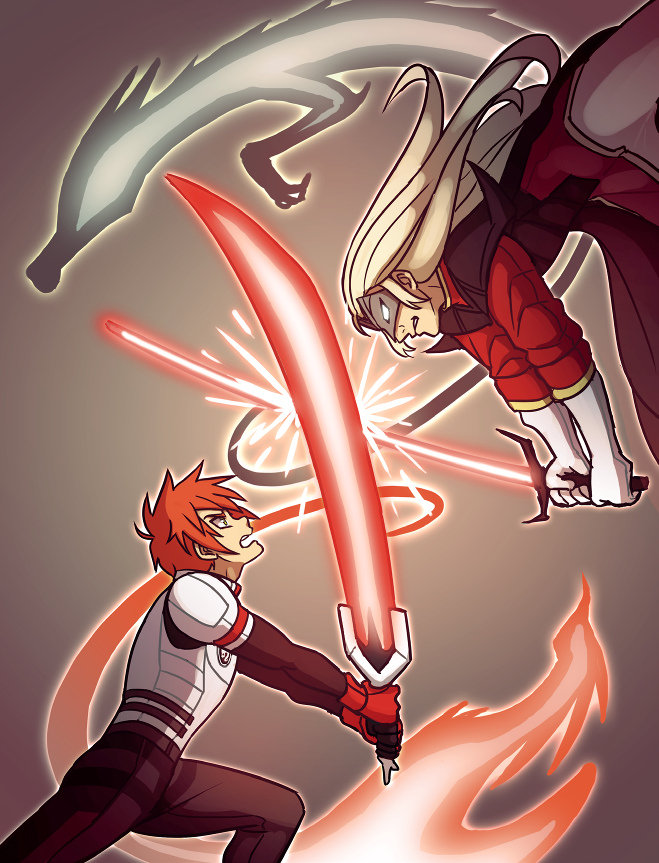
The Force is strong in Newtypes.
The Cores
The Barrier Core lets you create a line- or ring-shaped barrier with which you can try to hinder movement (and allies, unless you take a modifier) or block enemy attacks. Encase enemies in a trap of your own design or create a layered force field to protect yourself and your buddies (since each instance of Barrier can only block one hit).
The Boost Core is your buff effect, used to slap on a predetermined set of Skills on your target for 3 turns. Doesn't stack with other Boost Techniques, but at least you can temporarily get Skills one season earlier.
Probably most important of all, the Damage Core is there for all your damage-dealing needs. Everyone and their mother should probably have this at least once. This is probably a good time to mention that Valor uses fixed damage values. But don't worry, you'd have to be a wimp fighting a tank that is probably a few levels above you to not be able to deal any sort of damage.
The Healing Core is the opposite of the above. You can't use Strength or Agility for this, but you can use Guts, so your Tanky McTankerson character can keep himself going quite nicely.
The Mimic Core is the Kirby Core. A Technique with this basically acts as a slot for you to put in a Technique you saw someone do turing this scene. You could basically make a character who had nothing but Mimic Techniques and would just go and grab whatever cool stuff his enemies and allies did. Of note is that the Active Attribute is determined by the Mimic Technique, not the one you copied. So while your Muscle Mimic might do crap damage with a copied fireball, at least he can cast it with his fist.
The Summoning Core lets you summon a pre-made critter to fight with you. To keep this ability sane, the creature is only half as strong and tough as a PC, and you have to use a Support Action each turn for the creature to actually do anything. Considering that you can turn your Attack Action into a Support Action and that you can get a second Support Action later on, this means you can at most control 3 summons at once, though you can probably accomplish more yourself if you use your Attack Action for blasting stuff.
The Weaken Core is the opposite of the Boost Core, used to annoy people with temporary Flaws.
Target Modifiers
These are all the Modifiers that affect how many targets you can affect and how far away they are. The two big ones are Blast Radius and Line Attack for pure AoE goodness. These are also where Spirit-based Techniques shine, as they get the first level of Blast Radius cheaper and start with a longer line.
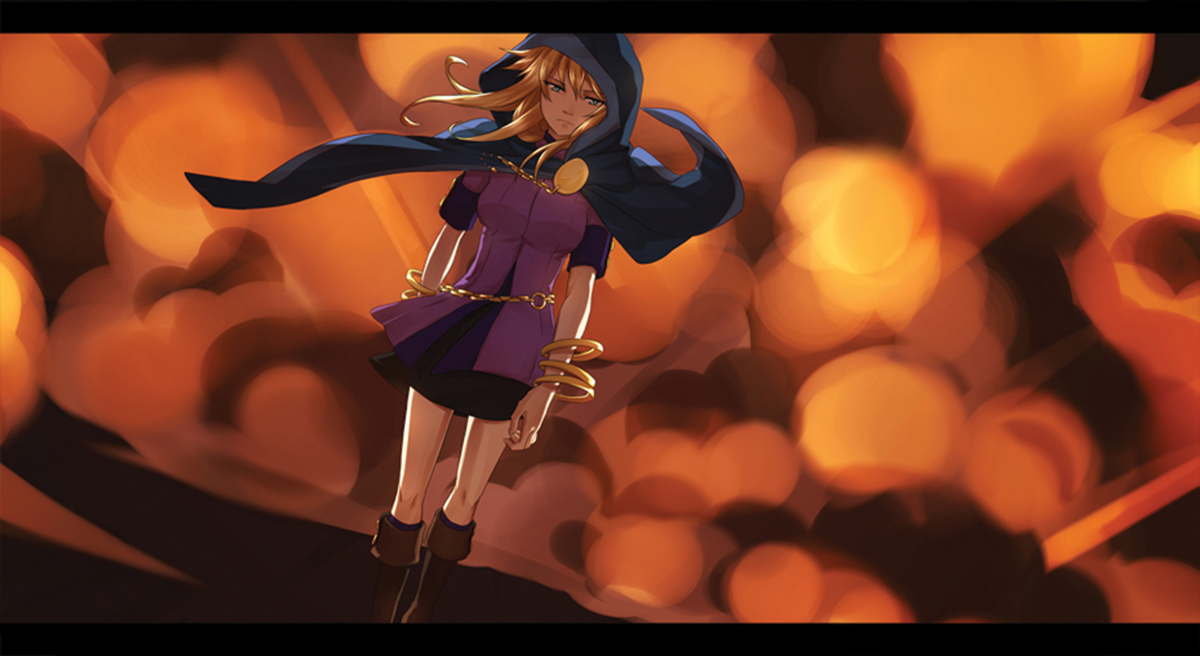
Just needs some sunglasses.
Another major one is of course Ranged Technique, which favors Agility and Spirit with more range. Strength-based attacks have fewer range, but this is still the main way to create a melee attack with reach (be it a polearm or the bite of a long-necked dragon). What I really like is that combining this with Line Attack lets you start the line anywhere within your range, like some kind of Gundam Funnel.
Multiple Targets is a fun one that lets you attack additional targets with the same Technique. So know we can take the above Funnel System and burn geometric shapes into the battlefield. This this Modifier is also favored by Agility, letting you hit an extra target. You want to be a gunslinger or shuriken-slingin' ninja, you better take this.
To avoid friendly fire with your blast attacks, you can use Line Variation to give your Line Attack a bend or two, or Smart Area of Effect to pick and choose who actually gets hit. Both benefit from the subtlety of Mind, granting the former an extra bend and making the latter cheaper to purchase.
For major style points, you can turn your Technique into a Rush Attack, which lets you hit anyone with move through. As this is usually something physical fighters and rogues do, Strength- and Agility- based Techniques get this cheaper. Also cheaper for them is Whirlwind Attack, a somewhat more limited Blast Radius always centered on themselves that is nevertheless the cheapest AoE Modifier for these physical Attributes.
And finally, there's Indirect Attack, aka "I don't care about cover or barriers, I just hit you".
Special Attack Modifiers
These are all for Damage Cores and add quite a bit of extra utility to it, at the cost of reducing the Technique's damage and preventing the use of more than one of these Modifiers on the same Technique.
Debilitating Strike essentially turns the Technique into a Damage/Weaken Core hybrid, while Piercing Strike ignores any Defense or Resistance the target has and applies all damage directly to his Health.
To keep yourself in the fight, you can add Drain to absorb some of the damage you dish out. Persistent Effect and Sapping Strike finally lets you build napalm and poison, respectively.
Alteration Modifiers
This is where most general Modifiers land. A lot of them let you replace the Technique's Active Attribute with something more desireble (for Muscle Wizards and Punch Witches). Another neat one is Damage Shift, which switches which of the defense stats (Defense and Resistance) is used to reduce incoming damage (if you want to punch someone's soul). Other cool things you can do is knock people down, immobilize or air juggle them.
For added tactical options, you can get Dash for a bit of additional movement before and after you use the Technique, Ramming Attack to bull rush your target and push them along, or Reposition to move them against their will. The latter can also be boosted with Throw to increase the damage you deal when repositioning someone into another target.
And for added DBZ-ness, there are a couple Modifiers to wreck the battlefield and create difficult terrain.
There are also a number of Modifiers specifically for the Barrier Core, letting you create barriers that are tall enough to stop flying targets, selective barriers that let allies and their attacks through, or barriers that deal damage to characters trying to get through.
Limits
There are quite a lot of these around, but they have your typical negative modifications to make Techniques slower, shorter or otherwise more restrictive. Techniques with a Cooldown, Techniques that trigger your Malevolent Entity, Techniques that only your Companions can use, Techniques you can't use until you have taken enough damage, Techniques you can't use if you've taken too much damage, a summoned creature that is about as intelligent as a Warhammer troll... you name it, it might just be here somewhere.
Ultimate Techniques
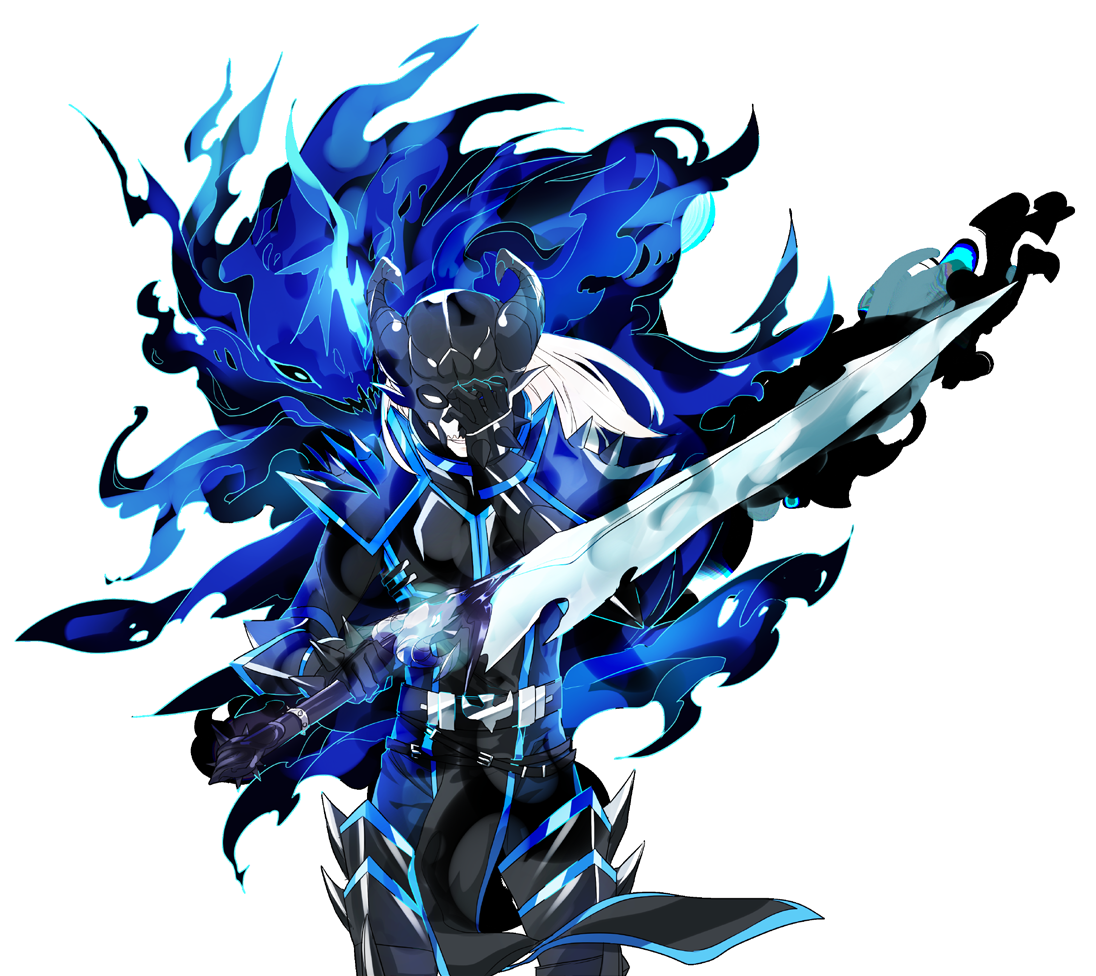
Aww, crap...
Ultimate Techniques are your Limit Breaks. You get them every 5 Levels by default, but you can change the rate. The important thing is that each of these milestones gives you an Ultimate Technique for free at the highest possible level you can have at that point. They are pretty powerful, but have high Stamina costs and can only be used once per Scene.
Ultimate Techniques have two Cores to choose from: The Ultimate Damage Core deals a crapton of damage and cheaper access to Modifiers, while Transformation has you go Super Saiyan. You gain extra Health and a bonus to all your rolls - and it doubles as a suped-up Boost effect that lets you get any Skill no matter the current Season. By default, the Transformation lasts as long as you want (within reasons), but you can add Limitations for a time limit or Stamina upkeep cost.
Ultimate Techniques come with some exclusive Modifiers and Limits:
Ultimate Modifiers
These are mostly for Transformations: Consecutive Transformation has you be even more DBZ-ish as this allows you to stack Transformations on top of each other. Intimidating Transformation can cause nearby enemies to be Shaken, and Transform Ally lets you apply your Transformation to someone else (so even Krillin can be a Super Saiyan).
Unerring Attack is quite useful for Ultimate Damage Techniques, as it lets you ignore the "once per scene" limitation until you've actually landed at least one hit with this Technique.
Ultimate Limits
These really cut donw on the Stamina cost, but come at steep prices: Dark Surrender Limit limit has you automatically be taken over by your Malevolent Entity, while Final Limit knocks you out after using your Ultimate Damage Technique. Ultimate Cooldown Limit has you wait a few Scenes before you can use the Technique again, while Ultimate Health Limit and Ultimate Valor Limit eat up quite a bit of your Health and Valor, respectively.
Next Time: Shall I see whether or not Valor can do Kirby?
Example Character: Kirby
Original SA post Valor - The Heroic Roleplay System
That took a bit longer tha expected, but here he is:
Example Character: Kirby
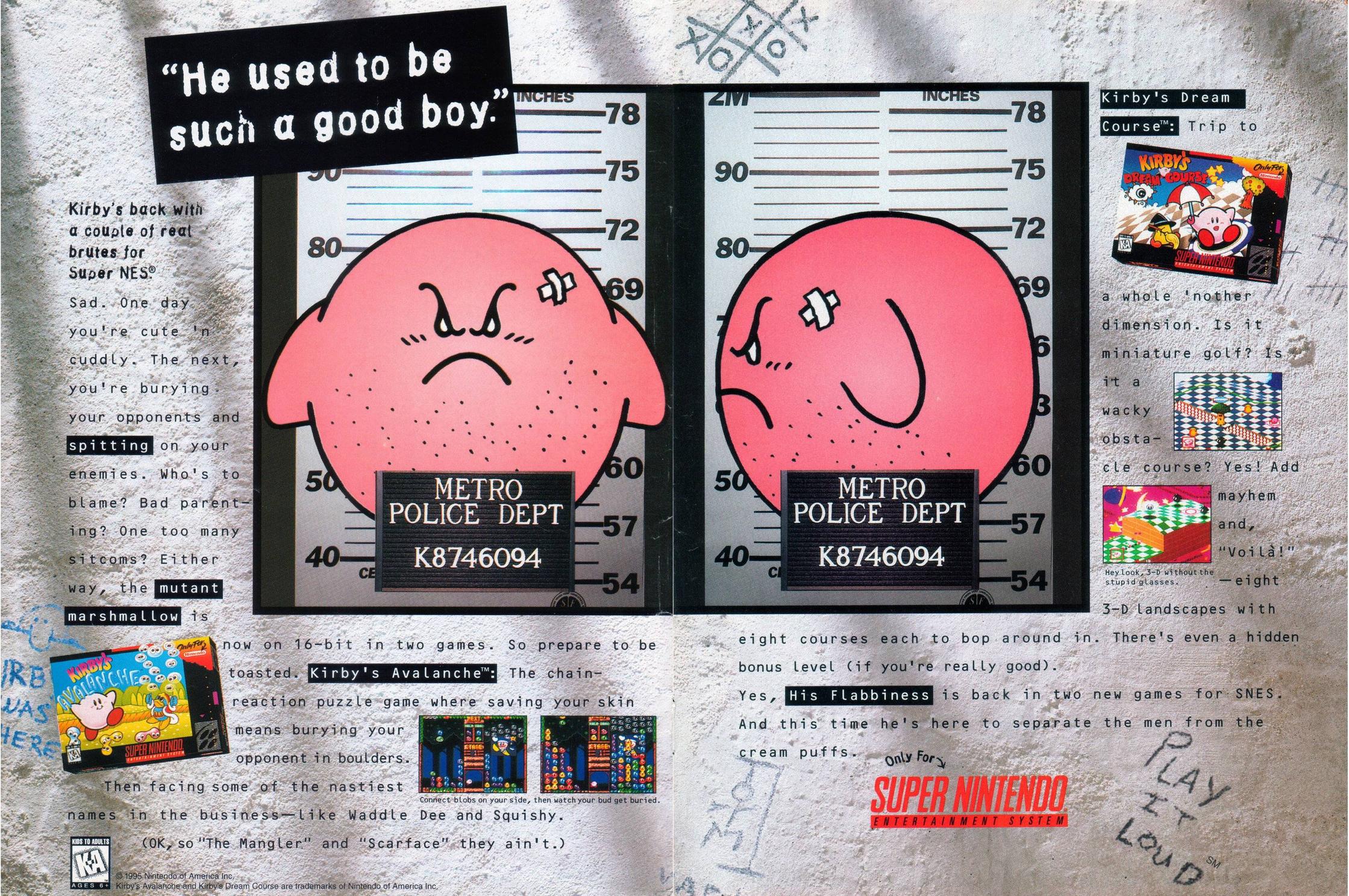
I love the 90s.
A starting character has 25 Attribute points to play around with, with an initial maximum of 8 on any given Attribute. Since he's a small, pink orb of doom bouncing all over the place, spreading chaos and misery and switching powers at the literal drop of a hat, I went with making Agility his top Attribute. A bit of Guts can also never hurt (he is pretty darn durable compared to other denizens of his world), and we should points in other Attributes to cover the damage dealt by his copied powers. Lets stick with Strength and Spirit.
To further go with his speedy death theme, I use the starting Skill Points to purchase Balanced Fighter (always handy, though for him it'll mostly be for out-of-combat utility), Feint (for possible extra damage), Jump (he does jump pretty good), and one level in Sprinter (for more speed) and Tireless (for more Stamina to spam Techniques).
Now this puts us a bit into the negatives, so I'll also get the two Flaws Compulsion (he really likes to eat) Feeble (he's small and lightweight, after all).
This makes his character sheet now look like this:
Level: 1
Strength (Muscle): 6 (5)
Agility (Dexterity): 8 (5)
Mind (Intuition): 1 (2)
Spirit (Aura): 6 (5)
Guts (Resolve): 4 (4)
Health: 130
Health Increment: 26
Critical: 52
Stamina: 34
Stamina Increment: 7
Strength Attack: 14
Agility Attack: 18
Mind Attack: 4
Spirit Attack: 14
Damage Increment: 6
Defense: 12
Resistance: 9
Move: 5
Valor: 0
Skills
- Balanced Fighter: +1 to all Active Attributes lower than the highest
- Feint: Opposed Dexterity Roll to an extra Damage Increment on next attack.
- Jump: Can attack flying enemies
- Sprinter 1: Move +1
- Tireless 1: Stamina +8
Flaws
- Compulsion (Eating): Must sacrifice Suppoer Action every other turn or lose 1 Valor.
- Feeble: -1 to Defense vs Muscle attacks.
Now for Techniques, I have 12 points to play around with. The most important Technique will be a Mimic Technique for his power copy shtick. This one definitely needs to be at the max starting level of 4 so he can make full use of any Technique he might come across at level 1 (in fact copied Techniques with a lower level with just level-up accordingly).
The nice thing is that every mimiced Technique will use the Active Attribute assigned to the Mimic Technique, but not the damage (which is why he can't slack off when it comes to the other Attributes).
Now the slight drawback of this system is that we can't limti this Technique to only work on stuf he has swallowed. It's just a slot to swap out for a Technique he has seen. He just got a whole lot scarier.
Of course, Kirby can also inhale stuff to either steal its powers and puke it out again. This one's a bit tricky to pull off as you can't just swallow people in Valor, so I'll abstract it to a Technique that deals damage and lets him move around his target, possibly throwing it against a wall or another target. He's basically doing the inhaling and puking in one move.
As Kirby also has that thing where he can shoot out inhaled air from flying, I give him an Air Blast for a general attack. I deliberately make it only level 2 and save up some Technique Points for later so he has a very cheap to use attack to fall back on if his Stamina reserves go a bit low.
Now for him to actually fly, he has to wait till he reaches Level 6, since then he qualifies for Season 2 Skills and Modifiers and can get Season 3 Skills (which is where Flight is located) through a Boost Core.
Techniques (2 leftover points)
- Air Blast (Lv2) : Damage Core Lv1 (Agility), Damage 38, Stamina 2, Ranged Technique 1 (4 Spaces), Movement Limit (-2; 2 Spaces)
- Copy Power (Lv4) : Mimic Core Lv4 (Agility)
- Inhale (Lv4) : Damage Core Lv1 (Agility), Damage 38, Stamina 6; Reposition 2 (3 Spaces), Throw
Example Mimic Techniques (Everything boosted to level 4)
- Bomb (Lv4): Damage Core Lv4 (Agility); Damage 38, Stamina 38; Blast Radius 1 (1 Space) Ranged Technique 1 (4 Spaces)
- Ice (Lv4): Damage Core Lv1 (Spirit), Damage 38, Stamina 6; Immobilizing Strike
- Sword (Lv4): Damage Core Lv4 (Strength), Damage 37, Stamina 6; Piercing Strike
- Fire (Lv4): Damage Core Lv1 (Spirit), Damage 34, Stamina 6; Rush Attack
- Cutter (Lv4): Damage Core Lv3 (Agility); Damage 33, Stamina 6; Piercing Strike, Ranged Technique 1 (4 Spaces)
- Stone (Lv4): Boost Core Lv4 (Guts; Iron Defense 1, Resistant 1); Stamina 8; Grant Flaw Limit (Slow), Self Limit (-1)
- Wheel (Lv4): Damage Core Lv2 (Agility), Damage 43, Stamina 6; Rush Attack
- Hammer (LV4): Damage Core Lv4 (Strength), Damage 53, Stamina 6;
Now since this post took a bit, here's a second character who totally works well with Kirby in a group:
Dante
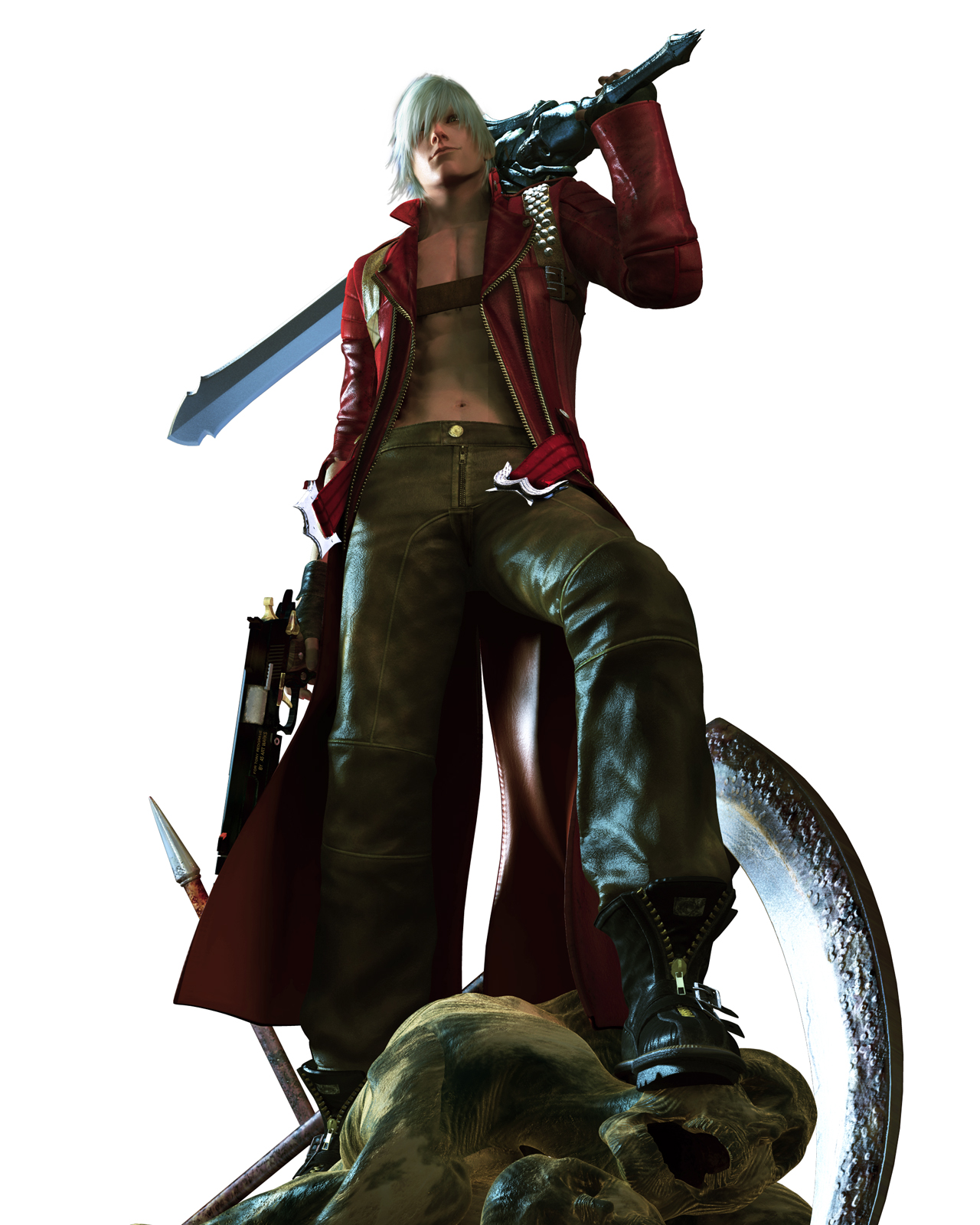
Too cool for White Wolf to not trace.
Level: 1
Strength (Muscle): 8 (5)
Agility (Dexterity): 7 (4)
Mind (Intuition): 2 (2)
Spirit (Aura): 2 (2)
Guts (Resolve): 6 (4)
Health: 160
Health Increment: 32
Critical: 64
Stamina: 28
Stamina Increment: 6
Strength Attack: 24
Agility Attack: 22
Mind Attack: 6
Spirit Attack: 6
Damage Increment: 6
Defense: 16
Resistance: 10
Move: 4
Valor: 0
Skills (1 leftover point)
- Jump: Can attack flying targets.
- Physical Attacker 1: +6 Strength and Agility Attack
- Resistant 1: +4 Resistance
- Tireless 1: +8 Stamina
Techniques
- Rebellion (Lv2): Damage Core Lv2 (Strength), Damage 49, Stamina 4
- Stinger (Lv4) Damage Core Lv3 (Strength), Damage 36, Stamina 6; Piercing Strike, Dash 1 (+1 Space)
- Ebony & Ivory (Lv3): Damage Core Lv1 (Agility), Damage 42, Stamina 5; Ranged Technique (8 spaces)
- Two Time (Lv3): Damage Core Lv1 (Agility), Damage 42, Stamina 5; Ranged Technique 1 (4 Spaces), Multiple Targets 1 (3 targets)
I build him as more of a pure physical attacker, using most of his Skill Points to cover his weaknesses while not having any Flaws for foes to take advantage of.
He translates a lot better to Valor, and I already know how his Devil Trigger would look like: an Ultimate Transformation Technique granting him more levels of Physical Attacker (for even more damage) and Sprinter (since he's faster). Once Regeneration and Stamina Recovery are available to choose, they will end up there as well.
Oh wait, Transformation can let you pick any skill from the start. Nice.
Next Time: The GM section - how to build mooks.
Game Master's Guide
Original SA post Valor - The Heroic Roleplay System
Game Master's Guide
The opening page is your typical GM advice along the lines of "everyone should have fun" and "don't be a dick", after which we get straigth into NPC creation:
NPCs
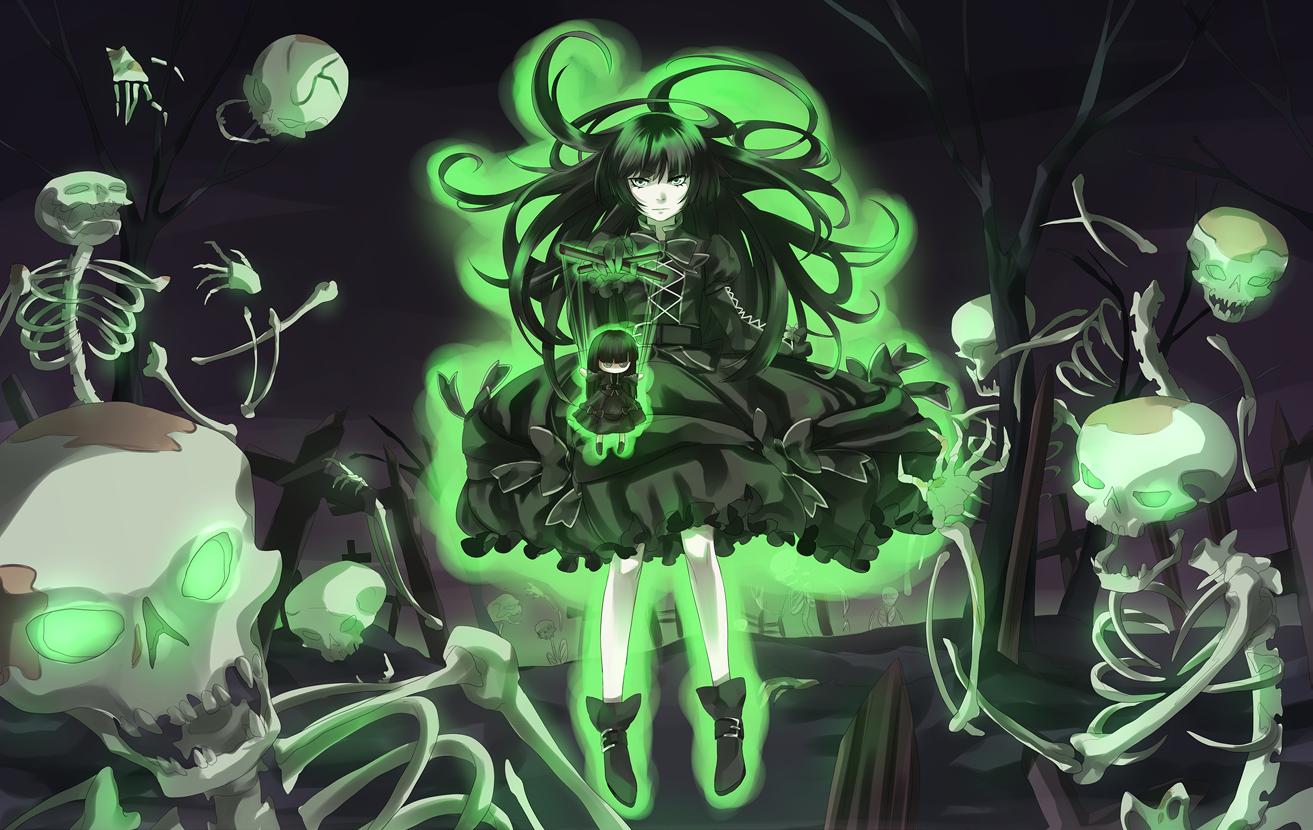
Skeletons ready to goth out.
NPCs in valor are built just like PCs, with a couple modifications based on the exact type of NPC:
Flunkies are like D&D 4e Minions in that they only have 1 Health, with around half the base damage output that is further diminished by the greatly reduced number of points they can spend on Skills and Techniques, their lack of a base Support Action and their inability to use Valor. They also cannot take damage in any way form a Technique that missed, which primarily means they don't knock themselves out from doing a Muscle Guard.
Depending on how good the PCs are at blasting the crap out of the battlefield, a single PC is around equal to 4-8 Flunkies.
Soldiers are the next step up, with half as much Health as a normal character, more points to spend on Techniques and generally less limitations than a Flunkie (though they still don't use Valor). They are roughly half as strong as a PC.
Swarms are several weaker enemies designed as a what is essentially a giant blob that attacks anyone in the spaces it occupies, similar to a D&D swarm with a greater variety of attacks to pull off.
Elites are just built like normal PCs, and therefore the first NPC tier to use Valor.
Finally, there are Masters, the final bosses at the end of a story arc. They are around twice as powerful as a normal PC and are the only characters in the game that have two Attack Actions.
NPCs also have two exclusive Skills available to them, which would be either a bit overpowered or not very useful for PCs and therefore require GM fiat for players to purchase them: Invisibility works like the Hidden Companion Skills, except it applies to an actual character instead of a squishy Companion, while Revive can restore a KOed Soldier back to full Health or revive a couple Flunkies. NPCs can also slap the Sacrifice Limit onto their Techniques, which has the Technique draw Health from an ally in order to activate. For a bit of a death spiral, there's the Battle Damage Flaw, which applies a penalty to all rolls for the remainder of battle every time the NPC loses more than 2 Health Increments (aka 40%) of its health, which works well for undead, robots and other types of constructs that have to be cut to pieces.
There are also some neat guidelines on how to create a challenging encounter for the party and how to factor in various kinds of battlefield hazards without making things too hard or too easy.
Valor Mechanics in the Game
Valor, the Action/Hero points of the game, can be gained through good roleplaying. This isn't called the "Heroic Roleplay System" for nothing, so PCs are expected to essentially behave like shounen characters: Shouting attack names, making dramatic speeches and generally helping people. The downside of this is that PCs can actually lose Valor from harming innocents, cheating or interrupting a villain's monologue.
Scenes
This is mostly dedicated to offering guidelines for Challenge Scenes, with additional talk about Hybrid Scenes that involve both combat and challenges.
Also mentioned are Elaborate Actions which are essentially swashbuckling actions for the PCs to attempt ino rder to gain a few bonuses, like a hit bonus or a bit of extra damage.
Campaign-specific Mechanics
These include a bunch of optional rules and Skills that might not fit every campaign.
Dark Valor are essentially Dark Side points and are gained instead of normal Valor when a character is driven by rage or anger and just has to win. They work just like normal Valor, but a character suffers one of several penalties each time they are used (like losing Health or triggering a Malevolent Entity).
Pillars and Vices are a new set of merits & flaws. Pillars are a character's ideals, codes of honor and similar things. Characters can gain Valor by upholding their Pillars, but they will also lose Valor from acting against them.
Vices on the other hand are essentially guilty pleasures. Your character knows you shouldn't solve every problem with energy blasts, but that won't stop him from doing it every now and then. Ignoring them gets you nothing, but relishing in your Vices gets you Dark Valor.
Every character should start with the same amount of Pillars and Vices, which can further be adjusted with a new Skill and Flaw.
Hunger and Fatigue describe the effects of lack of hunger and a lack of sleep, if the campaign bothers to include that bit of versimilitude. Both just boil down to a general roll penalty. Also included is a new Fatigue Limit that fatigues you instantly after using the Technique or ending the Transformation.
Illusions
I'm not too sure why these are optional, but here are a few illusion-related Skills. You can alter your appearance, create illusory barriers or a bunch of fake allies. Other characters can generally only see through an illusion if they have a good reason to believe something fishy is going on, or if they pick another new Skill that lets them attempt to see through illusions form the get-go.
Elements
This here is pretty nifty. You get the expected assortment of elemental-related Skills, Flaws and Modifiers (being vulnerable/resistant to an element, attaching an element to a Technique, or being so attuned to an element that all Techniques use it by default), but before all of that, the GM has to decide what kind of element system to use in the campaign. He can pick a simple direct opposition system where the elements are grouped in pairs that oppose each other, a more elaborate wheel system where each element is strong against one but weak against another element, or a combination of the two that lets you replicate Pokemon.
And since "Percing", "Bashing" and "Slashing" could also qualify as elements, you can also do Persona.
Equipment
As you may have noticed by now, Valor doesn't really care all that much about equipment. Characters are supposed to alway have what they need for their Skills and Techniques. A fighter always has his weapon of choice with him, and a wizard's spellbook is mostly for style.
These optional rules add a bit more meat, with new Skills, Flaws and Limits. A character could be Armor or Ward Reliant, reducing his Defense or Resistance if he doesn't wear armor or a protective charm. Damaging Techniques might require a weapon to use, becoming weaker or be not available at all if the weapon is missing. Other Techniques might require ammunition that must be gained outside of combat.
On the upside, two Skills are introduced to make your life a bit easier: Ranged Weapon Wielder adds additional range to all Ranged Techniques, while Polearm Wielder adds a bit of extra reach to any Technique that is neither ranged nor an AoE.
Special Equipment is also introduced. This is pretty much like Accessories from a CRPG, providing a permanent buff (aka bonus Skills) as long as they are worn.
A detailled example of Special Equipment comes in the form of Ego Weapons, which are intelligent weapons that become more powerful as they attune to their wielder, represented by their Synchronization rating.
(Though not really mentioned anywhere, things like potions and elixirs can probably be handwaved as "Here's a one-use item that gives you an Increment of Health/Stamina")
Next Time: Sample Campaign - Night of the Living Super Zombies.
Sample Campaign
Original SA post Valor - The Heroic Roleplay System
Sample Campaign
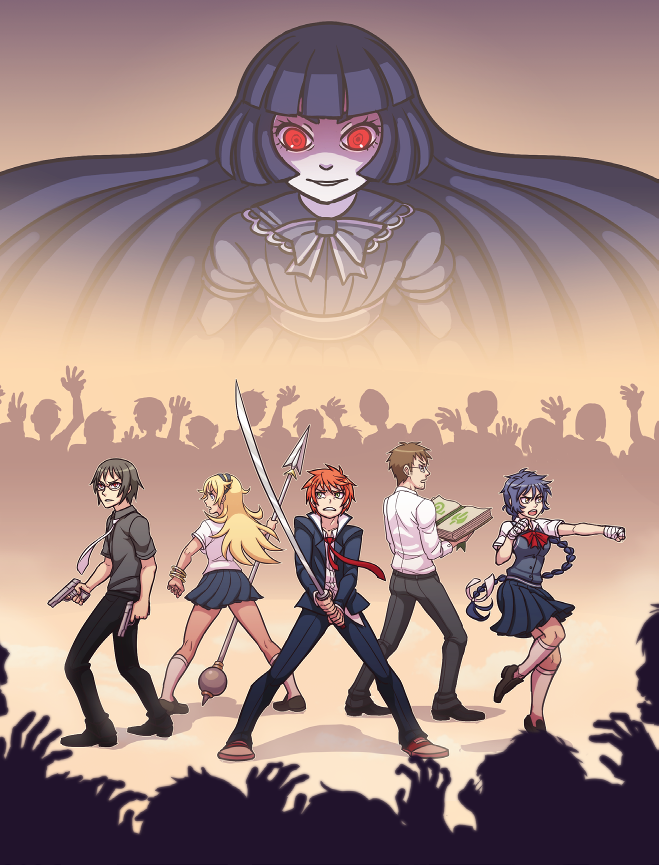
In case of a zombie apocalypse, stay with the bare-knuckle school girl and the hobby occultist.
You know how some games include an introductory adventure or two in their corebook? Valor takes this a step further and includes an entire sample campaign called... Sample Campaign that takes a party through their first Season (levels 1-5) in 29 scenes and almost 40 pages.
The layout of Combat Scenes is rather D&D4e-ish, with an overview of the battlefield and enemy positions. Enemy statblocks take up very little space, though noticably more space is dedicated to describing their Techniques and summarizing the effects of their defining Skills and Flaws. An example of how this looks can be seen in this free adventure on Valor's homepage here.
Something I don't quite like about the way the enemies are formatted is that their Techniques only describe their effect, not the Cores, Modifiers and Limits that went into making them. Then again this game isn't really HERO System, and passing familiarity with the Technique chapter should make it pretty easy to reverse-engineer these Techniques while reading their description.
Anyhow, onwards with the campaign:
The example setting is Valor City, located somewhere on the east coast of New Jersey. The players take on the role of Sighted, who have the ability to sense the Other Side, a parallel world of myth and legend. It's pretty much Urban Arcana, right down to how ordinary people perceive demi-humans as normal dudes.
To deal with the Other Side, the Sighted have founded five factions, which are best explained rigt along with the example characters aka Valor's iconics, as each of them belongs to one.
So going from left to right on the above picture, we have:
Gun-toting Shuuichi is a member of the Supernatural Suppression Unit, because these types of urban fantasy always need a secret government agency dealing with vampires and evil wizards.
Aside from his guns, he also uses bombs (both of which have a limited supply per battle) and can also use knives for some crazy melee stunts.
Gabrielle is an Otherkin, aka a
Since they're essentially a bunch of Sorcerers and Tiefling-analogues, the whole faction is a bit chaotic and poorly organized.
Hiiro is a Freelancer, which is really just a general term for a new Sighted who has yet to join a faction, or a Sighted who doesn't care about factions at all.
If his name and weapon of choice wans't any indication, he is the main shounen character type, combining powerful sword strikes with flame attacks.
Muranaka works for the British Order of Magi, a bunch of bookworm wizards with their origins in Great Britain. He's the go-to character for Mind-based AoE attacks and healing spells.
Tora is a member of the Fist of Susano'o, a secret order of monks who make sure that the Other Side doesn't try anything funny and kick ass for
(Each of these iconics no tonly come with a complete character sheets, but also guidelines on how to advanced them during the campaign if you're unsure what to do.)
Now the campaign doesn't waste time to have everyone meet in a bar or something. Instead, they all start with beating up zombies that have appeared in Valor City.
Beating them up reveals that they are no ordinary zombies: Each of them has a strange gemstone implanted that not only radiates with a lot of necromantic energy, but also seems to slowly regenerate the defeated zombies.
To find out who is behind this super zombie incident, the PCs will have to contact various factions and NPCs and deal with more undead, cultists, a biker gang, and more undead. All in all a good mix of combat and investigation, with a healthy variation on undead critters to beat up. I certainly approve of this, but then again I'm a sucker for undead (thanks, Harryhausen).
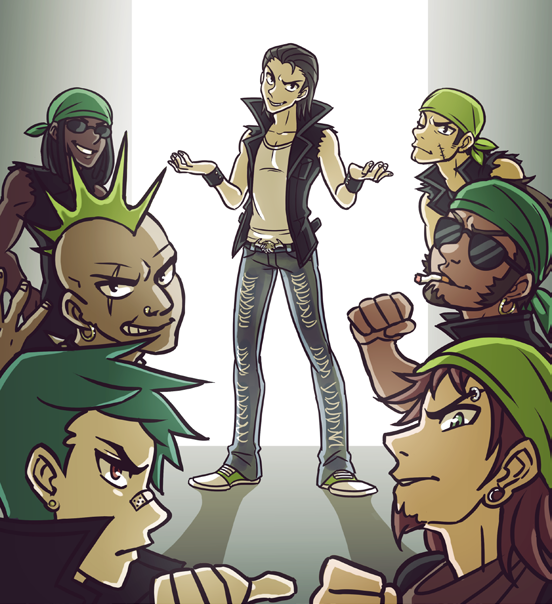
Meet this campaign's recurring boss.
If I had to critize one thing, I'd say it's that there doesn't seem to be a lot of focus on the actual main bad guys. There are plenty of little tidbits about various NPCs, but the main villains themselves don't really get a backstory, or cheesy one-liners like in Double Cross. Then again they only appear towards the end and I suppose by then the GM will have a clear view on his (and the party's) interpretation of the whole events.
And there you have it. Valor - if you ever wanted D&D 4e to ditch most D&Disms for Final Fantasy and Anime. I don't know about you, but I'll definitely be using it for a Monster Hunter conversion. This game just screams "Action RPG" and "Tactical RPG" to me.
Next Time: I won't spoil anything, but the next one's going to be a lot crunchier. With giant robots.